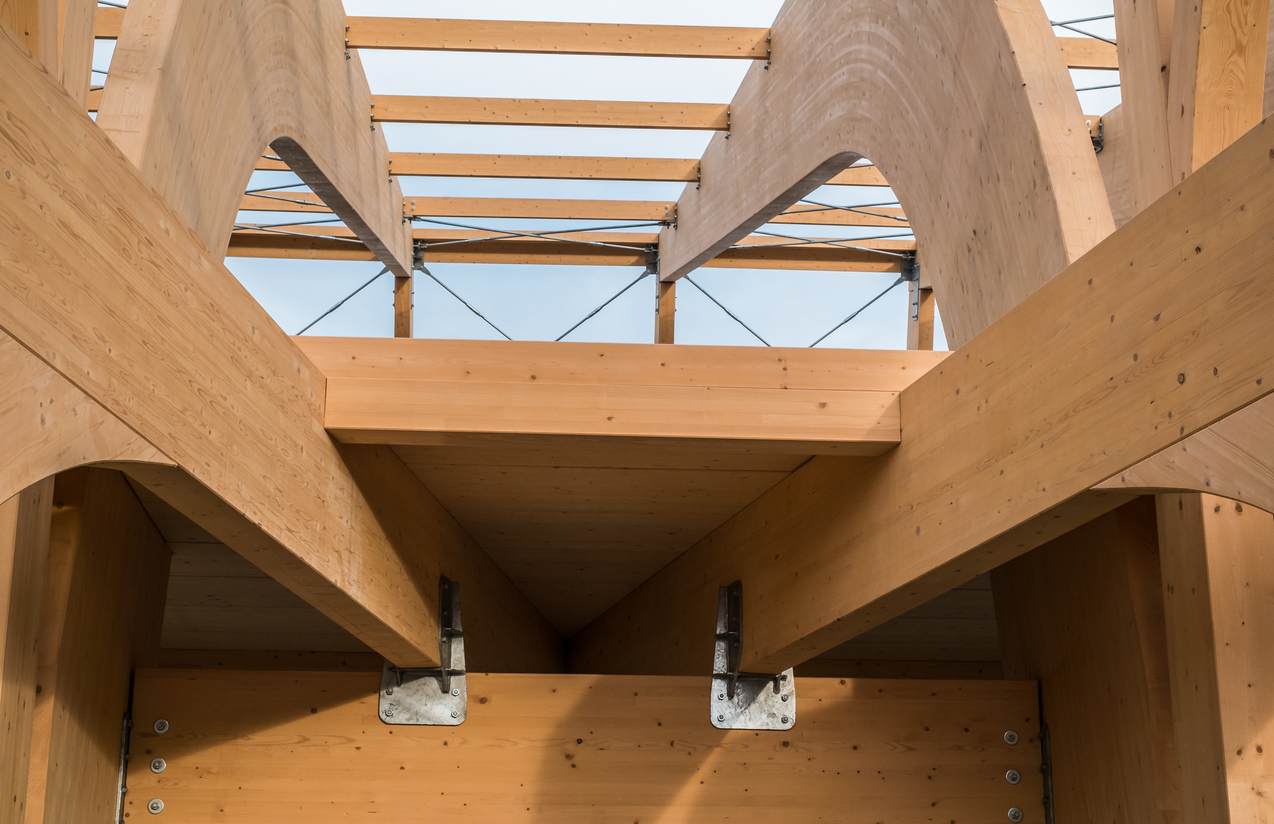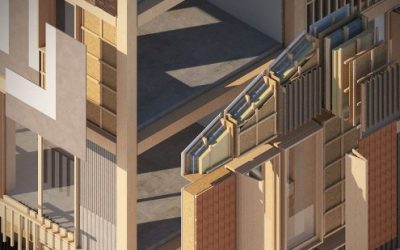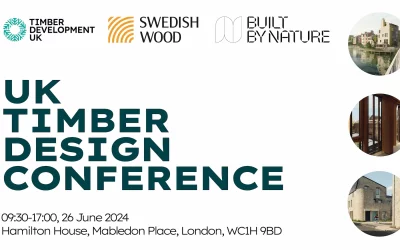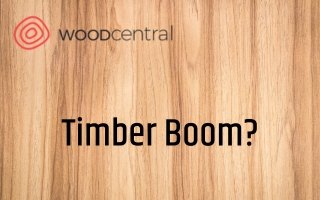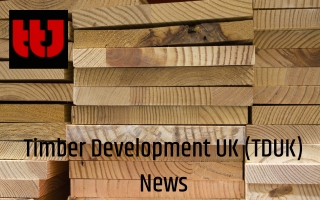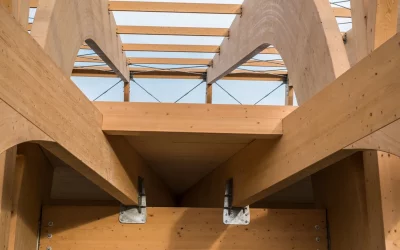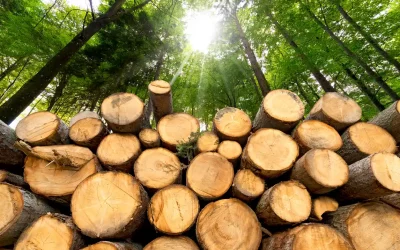Written by Wood Campus
Environmental | Industry | News
Expert urges solid risk management foundation.
Demand for mass timber, a sustainable construction alternative, has grown steadily over the past several years. However, a new trend is driving risks for the construction sector: mass timber being used for taller buildings, not just residential structures.
According to one expert, this shift is observed in Europe, Asia, and North America. Michael Bruch (pictured), global head of Risk Advisory Services at Allianz Commercial, noted that the increasing adoption of mass timber for higher-rise construction indicates a broader acceptance of the material beyond traditional low-rise buildings.
“The emergence of mass timber as a sustainable construction alternative represents a significant opportunity for the building sector to reduce its carbon footprint while also satisfying a demand for a more cost-efficient material but as durable as steel and concrete,” said Bruch.
“However, in any industry, deployment of new materials or processes can result in new risk scenarios, potential defects, or unexpected safety consequences, as well as bringing benefits, and mass timber is no different.”
Construction’s shift to mass timber – what are the most significant risks?
Bruch pointed to Allianz Commercial’s recent report on the risks posed by mass timber. According to the report, the construction sector is responsible for almost 40% of global CO2 emissions caused by concrete, steel, and fossil fuel-driven energy consumption.
Shifting to mass timber, a more cost-efficient material as durable as concrete and steel, allows the construction industry to lower its tremendous carbon footprint. Mass timber emits significantly less CO2: around 50% less than concrete and more than 25% less than steel, Allianz Commercial said in its report.
However, the potential risks associated with mass timber construction are significant, particularly regarding fire hazards and natural calamities.
“The good news from our research is that you can manage these risks,” Bruch said.
Fire is potentially the top risk of mass timber construction. Fire stands as the most expensive cause of all construction and engineering insurance losses, accounting for more than a quarter (27%) of the value of 22,000 claims analyzed over a five-year period, according to Allianz.
To mitigate this risk, Bruch emphasized proactive measures such as designing for fire resistance, using flame-retardant materials, and implementing proper construction practices.
He also noted that while natural hazards vary by region, the resilience of mass timber structures shouldn’t be underestimated.
“Natural catastrophe risks like hurricanes and gale-force winds can potentially affect beams, columns and panels. But mass timber is really strong,” said Bruch.
“Mass timber buildings weigh approximately only one-third of comparable concrete structures, and they have the highest strength-to-weight ratio, which enables mass timber to perform very well during seismic activity.
“Natural hazards can differ from region to region, but those risks can be managed well for mass timber buildings.”
Additionally, construction businesses face supply chain and labor exposures as mass timber demand grows. Mass timber must be obtained in sustainable ways, necessitating specialized production facilities.
“This means thorough logistical planning and management of building materials are essential to avoid costly project delays,” said Bruch.
“On top of that, construction firms may face challenges finding experienced workers for mass timber construction projects. But overall, mass timber buildings can be constructed faster than traditional buildings, so that’s a big pro that we’re seeing.”
Insurance implications for the construction industry as mass timber use expands
The global mass timber market is still in its nascency, but it has tremendous growth potential, according to Allianz Commercial.
Despite the risks involved, Bruch is optimistic about the potential of mass timber to meet sustainability goals and lower emissions. At the same, effective risk management practices and industry collaboration are needed to ensure the widespread adoption of sustainable construction materials and technologies.
Brokers and insurers can help construction clients transition to sustainable materials and technologies by providing risk management solutions and investment incentives.
Bruch stressed that each mass timber building is unique and presents specific risks that must be assessed and managed throughout its lifecycle.
“Given this market’s expected future growth, companies should do all they can to develop a greater understanding of their exposures, including fire, water damage, repetitive loss scenarios and even termite infestation, and ensure they have robust loss prevention measures to combat these,” said Bruch.
READ MORE: Orginal Article: Insurance Business
More News
STA – Government has an opportunity to re-shape housebuilding with timber frame playing a key role.
STA CEO Andrew CarpenterAndrew Carpenter, CEO of the Structural Timber Association (STA), writes about how the Government has an opportunity to re-shape housebuilding with timber frame able to play a key role. “In her first speech as Chancellor of the Exchequer,...
Arup launches global guide on building safely with timber
Tested by fire Inside the “Believe in Better” building, the UK’s tallest timber commercial building (Courtesy of Arup)Arup has published a global guide on how to build fire-safe mass timber structures to encourage more use of the low-carbon alternative to concrete and...
UK Timber Design Conference
Timber Development UK is proud to announce our exciting new conference focused on a low carbon transformation of our built environment using timber. Taking place on 26 June 2024, the UK Timber Design Conference will bring together disruptors and market leaders to...
Swedish Wood hosts high level event at the Residence of the Ambassador of Sweden to the UK
(left to right, Baroness Hayman of Ullock, Shadow Spokesperson for the Environment, Food and Rural Affairs; Stefan Gullgren, the Ambassador of Sweden to the UK; Lord Khan of Burnley, Shadow Spokesperson for Levelling up, Housing and Communities)Last Thursday 23rd, 40...
Will Prince William’s Bold Pledge Spark a Timber Boom?
The Prince of Wales has acted on his commitment to build low-carbon social housing on the $1 Billion-plus Dutchy of Cornwall lands.The Prince of Wales is spearheading a new initiative to construct social and affordable housing on the lands of the $1-billion plus...
TDUK releases UK timber product embodied carbon data
Timber Development UK (TDUK) has released average carbon data for the 10 major timber product categories. The data will support architects, engineers and other specifiers to make accurate assessments of the carbon impacts of their material choices as early in the...
Worlds tallest buildings mass timber revolution
As a part of Dezeen's Timber Revolution series, they have rounded up the world's 10 tallest buildings with mass-timber structures, including an engineered-wood shopping-centre extension and a carbon-negative cultural centre. Compiled using data from the Council on...
Think Wood’s 10 most popular projects of 2023
Think Wood is a communications campaign that provides commercial, multifamily and single-family home design and build resources to architects, developers, and contractors. Recently Think Wood announced its 10 most popular timber construction projects of 2023. Across...
Swedish engineered wood technology in wind turbines
If asked to imagine a wind turbine, most people would think of a steel structure—the current form of nearly all wind turbines used for renewable wind energy generation. However, despite what the steel industry claims, it’s hardly a given that wind turbines must be...
Timber in construction roadmap UK policy
The Government has committed to growing and maintaining a sustainable and long-term supply of domestic timber and wood products in the 2023 Environmental Improvement Plan. We have awarded £7.6 million through the Woodlands into Management Forestry Innovation Funds to...

